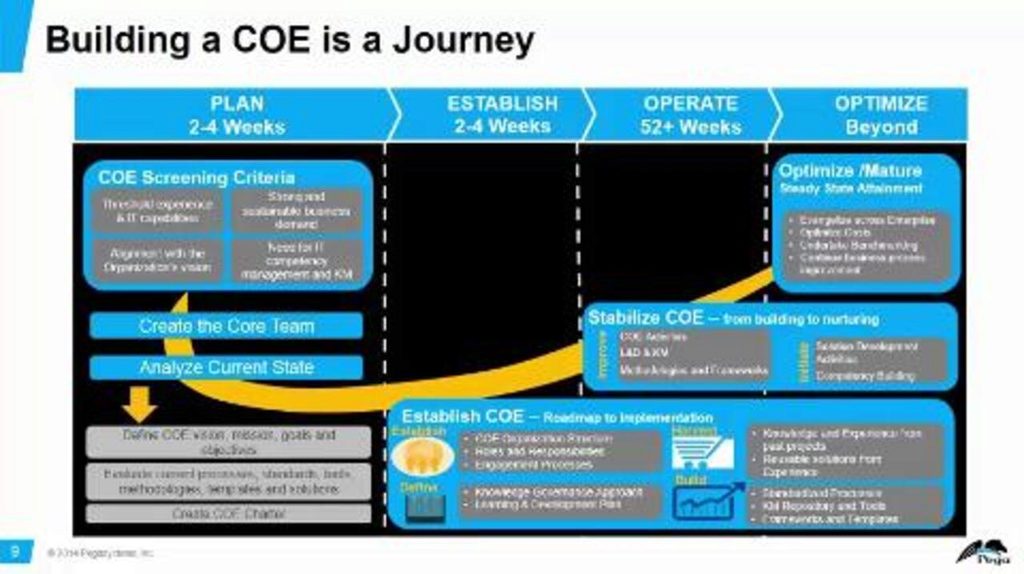
Explainer | 03:23
Building the COE

This clip focuses on what you should be thinking about as you build your COE. Paul Roeck and Kate Lepore present a typical COE journey and discuss the various stages of development and operation.
Transcript:
[Paul] When we talk about Center of Excellence, we wanna make sure that some key areas or categories are being addressed. We talk about the kind of the three-legged stool. The most effective COEs focus on the people in the structure, having the right people with the right skills doing the right things. The process, this is really all about the methodology and the way you execute. And then the third area we call enterprise policy and standards. But you can really think about that as more of the technical and architecture approach. And what I wanna point out, just as Forrester talked about the importance of COEs having IT and business involvement, we absolutely advocate for each one of these areas. There are certainly business and IT dimensions to all of these. We really look at a COE as being a great way to almost force close collaboration of working between business and IT. Some of you may have seen this slide in previous presentations, but it's extremely important. We are big advocates of treating COE as a journey. What's important is that you have a very clear picture of ultimately where you want to be in the future, but have a very realistic picture on what are those wildly important things that you're going to focus on in the near, medium and long terms. We advocate certainly an approach where you plan and clearly define what it is the COE is going to be and when it's going to do it. Establish building that foundation of those processes and architects. And again, good enough is good enough. We advocate you spending your time and money by doing not defining. Then you move into an operation. That's where you really, based on those initial high value items, begin to execute, show value, and then iterate and add additional scope areas or functionality to the COE as needed or as business demand.
[Instructor] And Paul talked about the phased approach or generational approach. We thought we'd just lay this out here as a reminder for you on how you might progress. And particularly for those of you who are starting the journey and looking to start building it, you're starting to look at the foundation about your vision and charter. And actually I wanted to draw attention to one comment about maybe only one third of the participants had identified charter as one of the areas that they had invested in. And we feel very strongly that that's a key area for you to establish as you're building your COE foundation. As you get through your vision and charter and have a go-forward plan, then obviously you move into your development phase where you're looking at things across the three-legged stool that Paul referred to, the people, process and technology. So you're thinking about what are the policies that we're building out? How am I going to enable and coach people? How are we going to take in projects and make sure that the methodology is aligned and adopted throughout those projects? And then finally, as you're going into the third stage or phase, how am I going to actually operationalize this and put this into execution as Paul's early visual. So Pega has some services that we can offer with and support you across these three phases. And typically the timelines are what are shown in the arrows below as well there are a number of resources available that can help you with some of these pieces and the community as well at large.
